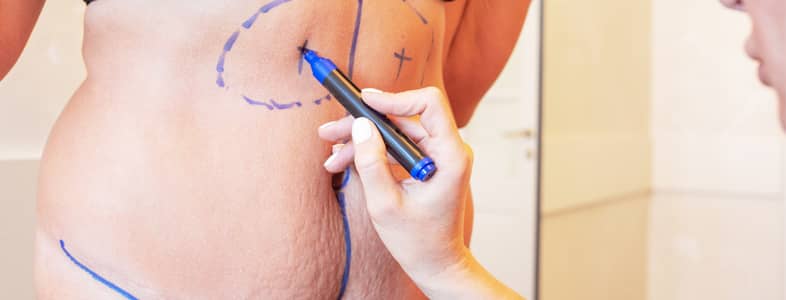
Many patients who opt for a tummy tuck procedure have had more than one pregnancy and now wish to regain their pre-pregnancy figure once they have decided not to have any more children. Such cases present extra care, as the abdominal wall muscles have been stretched and weakened as a result of gaining and losing pregnancy weight. By the time that these patients have decided to see Dr. Vincent Marin about the possibility of undergoing a tummy tuck procedure, their abdominal muscles have likely weakened and sagged significantly.
How Does a Tummy Tuck Repair Weakened Abdominal Muscles?
In a tummy tuck procedure for just the lower abdomen, an incision is made from one hipbone across to the other one. If both the upper and lower abdomen require tightening (as can often be the case following one or more pregnancies), an additional incision is made around the belly button.
The skin and underlying tissue are gently lifted away. The rectus abdominus muscles (the muscles between the rib cage and the pubic region that form what is sometimes referred to as the “six-pack”) are pulled together sutured tight. The belly button will then be repositioned if necessary. The tissue and skin are then re-draped over the abdomen’s new contour, pulled tight, and then sutured back into place. Any excess skin and tissue are then removed.
What Should I Do to Keep My Stomach Flat after Recovery from a Tummy Tuck?
Once patients have gone through the initial healing phase of a tummy tuck procedure and had all surgical drains removed (generally by about four to six weeks after the procedure), they can start working on strengthening the abdominal muscles to improve posture, maintain results from the procedure, and guard against further abdominal sagging. Dr. Marin recommends that patients have a regular routine of core-strengthening activities, such as Pilates, weight training, or yoga. Of course, patients should also follow a sensible, balanced diet low in fat and high in fruits, vegetables, and whole grains. Over time, more vigorous exercise, such as running or swimming, can be added to the workout routine.
What Might Happen if the Abdominal Muscles Aren’t Tightened?
If the abdominal muscles are not tightened during a tummy tuck procedure, there is a risk that the abdominal muscles will continue to sag. Over time, particularly if the patient gains back some of their weight, this may result in a less toned appearance.
In rare cases, such as the skin only needing a minimal amount of tightening, a tummy tuck will be performed without tightening the abdominal muscles. But in most cases, Dr. Marin feels it is better to include the tightening of the muscles.
*The content in this blog is developed to spread the awareness towards plastic surgery. Our blog is not intended to serve as a replacement for an actual in-office consultation with Dr. Marin. As such, the information within this blog reflects the unique cases of our individual patients.
Comments are closed here.